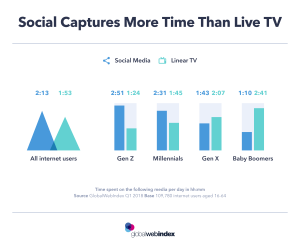When there is less to go around, we must reevaluate targets and leverage data to focus on high-impact activities.
As senior marketing leaders, you’re undoubtedly well-acquainted with the challenge of doing more with less. You’ve heard the standard guidance — prioritize, automate and use data. It’s good advice. But here are a few secrets that savvy marketing leaders should know to help deliver exceptional results despite resource constraints.
Doing more with less has a natural end
Both the productivity of humans and return on ad spend decrease when they reach saturation. Eventually, you have to do less and it’s your job as a leader to figure out what goes.
Avoid death by a thousand budget cuts. Start looking for entire programs, efforts or activities that could be eliminated. Bonus points for cross-functional efforts that remove some workload or expense from multiple teams. This approach also tends to feel benevolent on the receiving end, giving a much-needed morale boost to overstretched teams.
Keep in mind that as economic conditions are squeezing your marketing department, they are also squeezing your customers. Re-evaluate who you’re marketing to and how. Are the same targets still able to buy the same things on the same time horizons as they used to? It may be time to stop spending entirely on some personas and in some channels until better times.
And yes, data is your guiding light, especially when resources are scarce. Identify key performance indicators for all of your activities and track them meticulously. Leverage analytics where you can — and where you can’t, ask whether that’s something you should be doing if you don’t or can’t measure it.
People find bandwidth if there is something in it for them
That something doesn’t always have to be cash, but what else do you have to offer in a budget-constrained environment? Skills development. Growth. Collaboration.
You’ve hired well, which means your team has a treasure trove of diverse skills and talents in people who want to continue growing. During lean times, recognizing and leveraging what you already have is not only smart but critical.
Conduct a thorough assessment of your team members’ skills, expertise and interests beyond their current job description and function. Then, throw out the org chart. Permit, even encourage, people to work on projects and tasks across functional boundaries.
Create an exchange program where people can express their interest in new types of projects. SEM manager fancies themself a copywriter? Give them a simple email project. A content creator wants to become fluent in their own data. Pair them with an analyst on a small campaign or report.
This strategy gives people a chance to stretch, learn and add real skills and experience to their portfolio, while also providing some temporary relief to overstretched resources. A boost to the sense of agency and morale all around.
Dig deeper: How to overcome marketing budget cuts and hiring freezes
Sacred cows are grazing on your resources
Every marketing team has its sacred cows — broadly defined here as anything that has become immune to scrutiny or has become “part of the furniture” in the department. Sacred cows can be practices, beliefs, ideas, agencies, vendors or even individual employees.
They can be cultural. They can be tribal or personal. They can be newsletters, website sections, whole campaigns, channels, events, recurring meetings or internal reports.
Anything with the word “weekly” in its title probably warrants suspicion. Often, they are “what we have always done” — strategies that have simply lost their relevance. Yet, people believe they are still part of their job because no one told them to stop.
Especially during lean times, you must be leading the charge to seek out, identify and aggressively challenge sacred cows everywhere they may be hiding to ensure that all of the company’s resources are working hard for it.
To identify sacred cows, scrutinize your marketing activities with a critical eye. Look for initiatives that have existed for years without substantial updates or campaigns that continue without clear, measurable goals.
Pay attention to projects that absorb a significant portion of your budget without demonstrating a corresponding return on investment. Just because something worked in the past doesn’t mean it’s still effective.
Ask tough questions:
- Is this strategy still relevant?
- Is it aligned with current market trends and consumer behavior? Who reads this report?
- Does it contain information that anyone takes action on?
If the answer is uncertain or negative, you may have stumbled upon a sacred cow.
Confronting sacred cows requires courage, honesty, transparency and even compassion. There is usually a human or a team of humans who have been caring for that cow for quite some time and are attached to it. Tread purposefully but carefully. Remember to emphasize that removing sacred cows isn’t about blaming the past but righting the present and preparing for the future.
Start by initiating a conversation within your direct team. Create a safe space where team members can openly discuss existing strategies without fear of judgment. Encourage everyone to voice their concerns and doubts about the effectiveness of certain initiatives.
Reiterate the importance of data and analytics in evaluating the performance of these strategies. Metrics such as return on investment (ROI), engagement and conversion rates can provide a clear picture of these initiatives’ impact (or lack thereof).
Removing sacred cows does more than help in optimizing marketing resource allocation and liberating valuable time and money during lean times. The changes also create space for innovation, so have the courage to put those cows to pasture. Embrace the challenge, empower your team and watch the savings flow to your bottom line.
Optimizing budgets and teams for marketing efficiency
As senior marketing leaders, you must unlock the full potential of your resources, most urgently during lean times. Using data to guide your prioritization and workload management, making the most of your talent pool and having the courage to seek out and remove sacred cows are the secrets to optimizing your resources during lean times.
Embrace these strategies, and you can still deliver for the business and your teams, regardless of the resource constraints. Remember, it’s not about the size of your budget; it’s about the impact you make with the resources you have. So, go forth, brave leaders, and let these secrets of strategic marketing resource allocation help you achieve your goals despite these tough times.
The post Maximizing impact: Marketing resource allocation in lean times appeared first on MarTech.
MarTech(8)
Report Post






